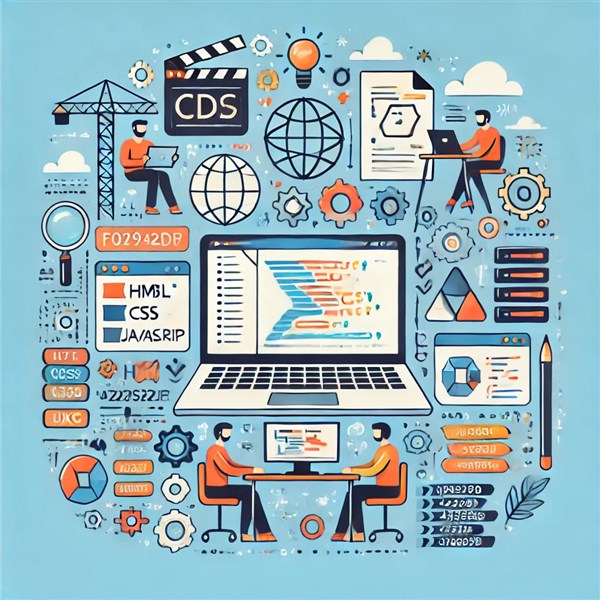We're open through the holidays to support your upskilling goals — Which training do you want to book?
We're open through the holidays to support your upskilling goals — Which training do you want to book?
Unable to find what you're searching for?
We're here to help you find it
As the digital world continues to expand, the demand for skilled web developers is stronger than ever. Whether it’s building sleek e-commerce platforms, interactive websites, or complex web applications, businesses rely on developers to bring their online presence to life. For aspiring coders, creatives, and career changers, enrolling in a web development training course is a powerful first step toward entering this exciting field.
But what exactly do you learn in a typical web development training program?
In this blog, we’ll break down the key technologies, skills, and concepts you’ll gain from web development training—giving you a comprehensive understanding of what to expect, and how it sets you up for success in the tech industry.
Any reputable course starts with the basics—the building blocks of the web.
🔹 HTML (HyperText Markup Language)
You'll learn how to:
🔹 CSS (Cascading Style Sheets)
CSS is what makes websites look great. You’ll learn:
🔹 JavaScript (JS)
JavaScript adds interactivity. You’ll learn:
These three technologies—HTML, CSS, and JS—are the core front-end triad, and every developer must master them.
With users accessing the web from all kinds of devices, responsiveness is key.
In your training, you’ll explore:
Responsive design ensures your projects are user-friendly and visually consistent, no matter the screen size.
To speed up development and create scalable apps, most courses cover at least one JavaScript framework or library.
Common Ones Taught:
You’ll learn how these tools streamline coding and help create modern, maintainable front-ends.
Once you’ve mastered the front-end, you’ll move on to the back-end—where the logic and databases live.
Topics Often Covered:
Back-end training allows you to process data, manage users, and build dynamic websites.
You’ll also learn how to store and retrieve data—a core part of web app functionality.
Common Database Skills Taught:
This part of the training gives you full-stack capabilities and the power to build scalable data-driven apps.
Security is a critical aspect of web development. You'll be introduced to:
These skills prepare you to build apps that are both user-friendly and secure.
Modern developers use version control to collaborate and track changes in their code.
You’ll learn:
This enables you to collaborate effectively and manage your codebase professionally.
A good training course doesn’t just teach you how to build apps—it teaches you how to launch them.
You’ll explore:
By the end, you’ll be able to publish your portfolio or business app on the web for the world to see.
Every developer must know how to fix bugs and test their applications.
You’ll Learn:
These problem-solving skills are essential for maintaining high-quality, bug-free code.
Some training programs go beyond technical topics to help you prepare for job readiness.
You may also learn:
These extras give you the confidence and resources to launch your web development career.
Many courses prepare you for recognized certifications, such as:
Even without a formal degree, these credentials validate your learning and help you stand out to employers.
🏁 Final Thoughts
A web development training course offers more than just coding—it offers a pathway to opportunity. Whether you want to freelance, launch a startup, or land a job at a tech company, the skills you’ll gain are foundational for the modern digital economy.
When choosing a web development training course, it's important to ensure it's comprehensive and up-to-date with the latest industry trends. Koenig Solutions, a leading IT training company, offers a range of courses that can help you become a skilled web developer.
Whether you're a beginner looking to get started or a seasoned professional looking to upgrade your skills, Koenig Solutions has a course for you.
By the end of your training, you’ll be able to: ✅ Build beautiful, responsive websites
✅ Create full-stack web apps
✅ Collaborate on projects using Git
✅ Deploy real applications to the web
✅ Apply for junior web developer roles or freelance gigs

Aarav Goel has top education industry knowledge with 4 years of experience. Being a passionate blogger also does blogging on the technology niche.










